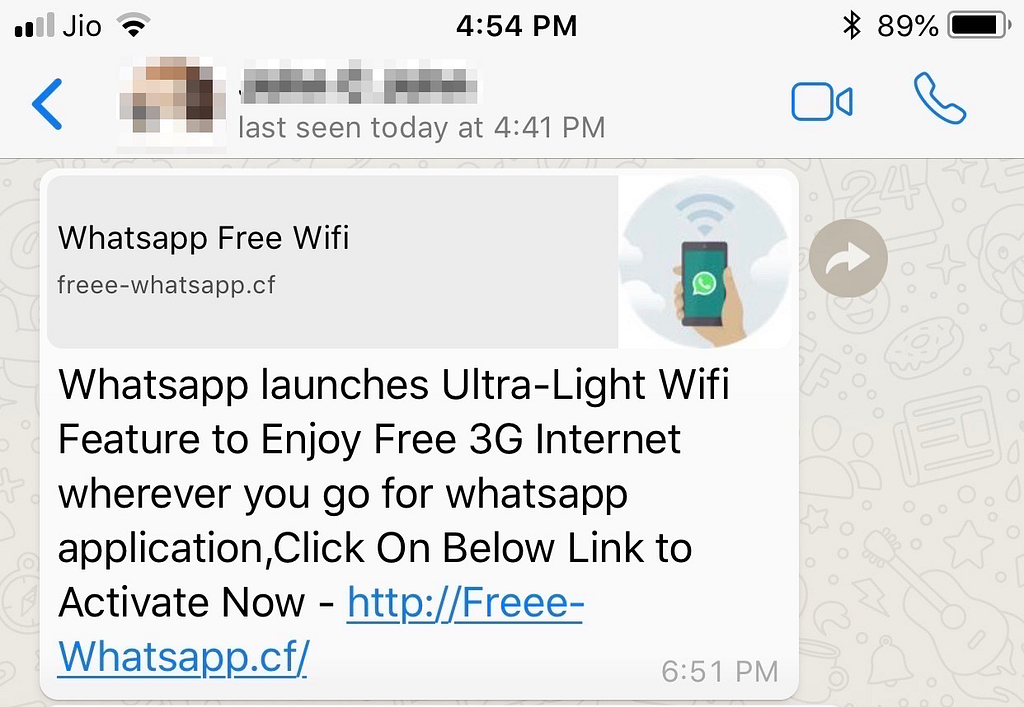Latest news about Bitcoin and all cryptocurrencies. Your daily crypto news habit.
 We can’t change the world, but we can change the way we view it
We can’t change the world, but we can change the way we view it
Today, I learned a new word, ‘Webqoof.’ According to the Urban Dictionary, ‘A Webqoof is a person who believes every word or information on the Internet and social media.’
The first thought that crossed my mind was whether I was being a webqoof to believe the word actually existed. But the Urban Dictionary could be believed. Or could it? A quick Google led me to Wikipedia which says the Urban Dictionary is a crowd sourced dictionary established in 1999 with its founder being its sole employee. I suppose if it’s been in existence that long with one sole employee, then it’s not a figment of his imagination.
Fiction becomes fact
Am I being a bit paranoid? Possibly, as I’m just recovering from being taken for a ride by a John Koenig, who has spent the last few years creating an original dictionary of made-up words called The Dictionary of Obscure Sorrows. Some of these words like ‘sonder’ have actually become real words.
This was a rare instance of my not minding being taken for a ride. But it doesn’t change the fact that I was, which only confirms my links to the Webqoof tribe.
Fiction becomes truth
The truth is I’ve always been easily fooled as I assume most people speak the truth. I know it’s naive of me so when I first saw the word, Webqoof, I had a sinking feeling it was referring to me.
Once upon a time, my gullibility wouldn’t have really mattered as the truth would eventually make itself known. But in recent times, the line between facts and fiction has begun to get blurred. In fact, there’s a whole lot of smart people who are quite thrilled by the recent discovery that if an untruth is repeated endlessly with conviction, it will soon pass off as a truth.
Social media has played a major role in this dilution of facts. The same cartoon that enlightened me about the existence of the word ‘Webqoof’, hints at this power of social media (ironically, I received it via a WhatsApp message).
 Virals that spiral out of control
Virals that spiral out of control
In India, Whatsapp is graduating from a source of jokes into a serious worry. That’s because people often view whatever they see on WhatsApp as gospel. And as WhatsApp is the default means of communication for millions of Indians, things can often go out of control. Hitting the ‘send’ button is a bit like opening Pandora’s box — you can never put back what came out.
Unlike traditional media, where editors have a level of control over what appears in it, in social media like WhatsApp, anyone can say whatever they wish. In India, this has led to a dangerous trend with several incidents of innocent people being lynched by mobs. What incited the mobs were unsubstantiated viral videos of child lifters and the like circulating on WhatsApp. More about this later.
Anonymity can make killers out of kids
In 1839, Edward Bulwer-Lytton coined the phrase, ‘The pen is mightier than the sword.’ The 21st century version of the pen, the keyboard, is infinitely more powerful. It doesn’t take long for an anonymous soul sitting behind a computer or smartphone screen, to edit a video, twist it into an inflammatory communication, and let it loose into the Wild West of today’s internet.
What makes the keyboard dangerous is that anonymity. This allows the creator of a message to avoid taking responsibility for the consequences of his creation. What’s worse is he cannot even be held accountable as the internet makes it easy for him to remain anonymous and untraceable.
By an apt coincidence, I received a WhatsApp message about how one such fake kidnapping video was created as I was writing this article.
The videos the commentators refer to are what led to the lynchings. Keep in mind that the fake news creation process is universal, even though the context of this kidnapping video is rural India, where the poor are often uneducated and hence susceptible to wild rumours. As a result, their emotions are easily whipped up by groups of concerned villagers. Eventually, the perceived threats to their families causes these villagers to react violently to outsiders.
Who makes fake news and why?
The first step to tackling fake news is to understand it. Why do people make fake news? How does it spread? What makes us fall so easily for it?
Let’s start with the Who. Here are a few I can think of.
The Crooks: This is an online criminal whose goal is outright theft. When you click on a fake message from them or visit a fake site, it enables these thieves to access your private info, and use it to steal something from you. An example is the messages you get announcing you are the lucky winner of a million dollars, and all you need to collect your winnings is pay a small money transfer fee. Here’s a caring message from my personal Mother Theresa.
 If they have so much money, why do they want me to send them a money transfer fee?
If they have so much money, why do they want me to send them a money transfer fee?
The Profiteers: These guys see fake news as a simple and profitable business. They make an income from ads on their highly viewed sites. They have perfected the art of copying the look and feel of official or popular news sites. The headlines are catchy enough to hook even savvy netizens to click on them just to check the veracity of the news. That is all the fake news purveyors need, as more views generate more dollars.
This kind of news is also often cleverly done as a slight twist on existing real news. For instance, Mount Kilauea of Hawaii is in the news with its volcanic eruption and molten lava flowing on the streets. So a fake news creator would run a fake headline saying, “Airliner almost knocked out of the sky by volcano” and run it on some website with a seemingly credible url like usatodaylive.com (I’m assuming that doesn’t exist). It’s hard not to click on such news as the headline is every flyer’s nightmare, and it seems to be a true story as we know the volcano is really erupting. Notice the plane is not named and never crashed so you can’t really disprove the news by googling for a plane crash.
It’s people who create stuff like these who may have influenced the last US election. And the scary thing is they aren’t done. This CNN-Money article on the city of Veles in Macedonia preparing to make big money during the US election in 2020 shows why it’s ‘simply business’ for some people.
The Sharers: The profiteers wouldn’t exist if people didn’t click links that led to their fake news sites. This is what generates revenue from ads on those sites. People disbelieve stuff from strangers, but tend to believe something they receive from friends. This is what makes the sharers extremely critical to the success of fake news.
What they don’t realise is that by helpfully sharing the fake stories in their social media, they are serving as unpaid employees of the fake news creators who must be laughing all the way to the bank. The Macedonians claim to make millions from this activity, and there’s nothing anyone can do about it as they are not doing anything illegal.
The Politicians: The Russian connection to Facebook ads via Cambridge Analytica during Trump’s election is now common knowledge.
 A lie when repeated endlessly becomes an alternate fact
A lie when repeated endlessly becomes an alternate fact
I recall the fake news of the Pope endorsing Trump was all over Facebook at the time. The fact that it was untrue didn’t matter after a point. Because after repeatedly seeing it, many Facebook users would have subconsciously begun to believe it. I’m sure quite a few of those users’ votes would have gone Trump’s way, influenced by the ‘fact’ that a revered religious leader believed in Trump. Now this was just one instance among a whole lot of fake news that was floating around the net during the election. The only positive outcome of fake news influencing the results of that particular US election is that most people have become aware of the magnitude and power of fake news.
And this is happening all over the world. Here is a political stunt in India, designed to create divisions along religious lines among the Indian voters.
Basically, a ten year old video showing excessive police violence in a church in faraway Indian state, was recycled to make it seem that politically inspired riots were happening at the moment in a church in the locality. Pretty crude stuff, but good enough to fool a non-tech savvy WhatsApp user.
(As an aside, I’m impressed by the boomnewstv channel on YouTube. They are taking on fake news in India their own way. We need more of this tribe.)
The Pranksters: This lot get their kicks from creating stuff that looks authentic. The sale ad below was done as an April Fool joke by Scandinavian homeware retailer Clas Ohlson.
Though it’s usually harmless fun, sometimes things can go out of hand. The kidnapping video which went viral is a good example. The pranksters must have had a good laugh when they edited it to make it seem like a real kidnapping. But what happened next wasn’t funny as the videos incited the ignorant villagers to lynch innocent people whom they suspected as being kidnappers.
The Helpful Editor: These guys embellish stories with their own additions, probably to drive home the point more effectively. Like for instance, I received a WhatsApp message with a gory image of a burnt body lying beside a car on a road. The accompanying audio requested people to avoid making calls during thunderstorms claiming the man shown was hit by lightning while using his phone while driving in a thunderstorm. Turns out the face portrait shot of the victim in the original message was replaced by the image of the burnt body by some unknown person/s. The second image was that of man burnt to death in a road accident. The real victim was indeed killed by lightning when he was out at a shrimp farm trying to take snaps of the place on his mobile phone.
I believe the guy who changed the image must have felt the story would be far more impactful with a photo of a burnt body. That probably mattered more to him than the feelings of the two families involved.
Or maybe, he’s just a symptom of the new generation who live in a virtual world that has lost touch with the real world where emotions and feelings matter.
The Crusaders: This type of fake news creators may not have profit as their motive. For instance, they may believe 9–11 is a conspiracy theory, and treat anything related to their theory as gospel. Because they are passionate about their beliefs, they go to great lengths to flesh out their stories with fine details that make it seem eminently believable.
The Do-Gooder: This kind shares stuff they feel will be helpful to their friends even if they aren’t sure it’s true. The one below has links to some scamster. I can’t confirm this because I didn’t want to take risk of visiting that site and having my device or computer infected with viruses or malware.
 A fake offer on WhatsApp on WhatsApp (and that’s not a typo ;-)
A fake offer on WhatsApp on WhatsApp (and that’s not a typo ;-)
The Hidden Agenda: I must add that fake news actually existed long before the internet was invented. The tobacco industry comes to mind. Lucky Strike was ostensibly trying to protect your throat with its cigarettes in this ad from the last century.
A spiritual descendant of the tobacco industry is the sugar industry which managed to reverse the results of a key study by Harvard researchers that indicted sugar instead of fat as the cause of heart disease. That helped sugar find its way into almost every packaged food product, making it possibly the most profitable fake news of all time.
Why do people make fake news?
There are many reason why people do so. It could be a country trying to ruin the image of a rival neighbouring nation. It could be a political party with an agenda to gain mileage by confusing voters. It could be someone trying to make money by discrediting a company and driving down its share price. In the Indian context, it could be a religious party trying to portray an opposing religion in a bad light.
It could also be pure ignorance. For instance, it could be a kid who edited the kidnapping video. For him, it’s just a game whose reward is the fame of having created a video that went viral. These kids are yet to mature or understand the consequence of their actions. With thousands of tech savvy new kids coming online everyday, it’s virtually impossible to stop these trigger happy youngsters from shooting off such messages that can have unpredictable consequences.
Or maybe the creator is a completely amoral older guy who doesn’t give a damn if someone is killed. His only obsession is to prove to the world how smart he is to be able fool everyone.
I think we can conclude that we will never really figure out all the motivations of all the different people who create fake news. And with the way the internet is, we may not even be able to trace who created the fakes, let alone stop them.
Control yourself, or someone else will
One result of the deluge of fake news is censorship by governments. During the periodic riots that rock India, the government now shuts down the internet in the affected areas to prevent rumours further stirring up the rioters.
There’s a lot of research going on about fake news. But we don’t need anyone to tell us that the solution to this problem is not censorship by government or a central authority. Any government with such powers will soon misuse it for their own benefit, and that could be even worse than fake news. Besides, politicians can be bought, or maybe, already have been bought.
That leaves us with only one option. We have to change ourselves so as avoid being controlled by fake news.
Fighting fake news starts at home
Every one of us has to fight fake news by evolving and adjusting to the changing times. Once we begin figuring out things, and share our learnings, I have no doubt that we can tackle this epidemic of falsehood.
For starters, I believe the only way to survive in this new world of alternate facts is to start questioning our eyes. That calls for a complete change of perspective. Our default has to change from believing everything we see, to assuming everything is a lie, unless proven otherwise.
Here are a few rules I follow to identify fake news.
Rule #1: If it tugs at your heartstrings, it will disable your brain
When we see news that touches us, we’re more likely to fall for it, and share it. Fake news purveyors know this weakness of humans, and are always trying to exploit it.
For instance, I detest corruption, which is endemic in India. So when a message came around a while ago on WhatsApp saying India was minting new currency notes with chips that would enable them to be tracked, I was thrilled. And I happily forwarded it to my circle on WhatsApp.
I ended up with egg on my face. If I had bothered to think about it for a moment, I would have realised that it’s physically impossible. But the thing is when emotions come into play, I tend to get a brain fade. My only consolation is that I wasn’t the only one who fell for it, as even prominent Indian news sites published the same news.
Once bitten, twice shy. Since that experience, I have become extremely sceptical about any news that comes to me online channels, and have not been fooled for quite some time now. Touch wood!
Rule #2: To filter ‘fake news,’ use the ‘pause’ button
A couple of nights ago, I received this message:
Imran Khan is famous for being the captain of Pakistan’s World Cup winning cricket team. As Pakistan and India have been perpetually at war with each other for the last 50 years besides both being cricket crazy nations, every Indian knows who Imran Khan is. The fact that Pakistan is currently infested with all kinds of violent terrorists from Al Qaeda to Taliban to various other breakaway groups also made this news easy to believe.
After my currency note humiliation, I usually ignore such messages. But since it was from a close family member, I sent a reply to show I had seen it. I then googled the news to confirm its veracity (which is now a regular habit). All that turned up on Google was a rumour of Imran Khan being shot back in 2014 and a video (warning: graphic images) of the injured Khan being carried away.
Since there was no confirmation, it seemed to me this could probably be the same 2014 video being recycled till it had gone viral. I decided to wait until the next morning. When I woke up, I had forgotten all about it as the big news was of Messi’s wonder goal against Nigeria which helped in Argentina’s last gasp qualification for the knockout stages of the soccer World Cup.
Rule #3: Follow the money
When I recalled the Imran Khan news, I went back and checked the details of the video I had seen the previous night. It was published on June 26, 2018, had received 23,989 views by 28th (and is 28,652 views on 29th), and purports to be for a publication called Mumbai Highlights. The author, who goes by the sidey name of Lake Garden, has not bothered to take down the video. This despite the news being proved to be fake, with even comments in the video saying so. Seems to me this opportunistic individual (maybe just a kid) was hoping to collect enough hits to make a few dollars from YouTube by hitching a ride on any viral news.
We live in an amoral world where people will do anything for a bit of cash.
Rule #4: Check the Source
This has now become second nature to me. When I see something surprising on the net, I check the URL to see if it’s a familiar one. If it isn’t, I verify it with a fact-checking site like snopes.com. Here’s one such ‘scientific news’ that has me sort of puzzled.
Evidence Emerges That Hawaii Eruptions Caused By Fracking
The story touched a chord as I detest the big corporates who destroy our planet for profit. But like I mentioned earlier, appealing to my emotions is a favoured ploy of fake news purveyors, and makes my antenna buzz. I checked the unfamiliar url ‘yournewswire’ on snopes, and found that the story was listed in their 50 top fake hits.
What surprised me is the site had no ads though he must be getting a lot of views (having featured on Snopes probably helped). My guess is the author of this story is not into it for the money. He’s probably a good fit for my ‘Crusader’ category, and his cause is environment. He really builds up a convincing story, backed by lots of details. Like Greenpeace, he might be feeling that it’s okay to bend the rules a bit as it’s an unfair battle against corporates who fight dirty.
To be frank, I actually half believe this guy and am tempted to think snopes may have got it wrong for once.
And that to me is the real challenge.
Rule #5: Pinch is out, punch is in
The truth is ‘the truth is evolving.' We no longer live in a world of black and white as far as facts are concerned. There are very few absolute facts. Most facts can change when seen from different viewpoints and timelines. For instance, if Napoleon had said he would attack England by air, he would not have been speaking the truth. But Hitler did exactly that.
Or take the sugar vs fat story by NYT. For half a century, that one report falsified by paid-off by research scholars at Harvard, had the whole world labelling fat as unhealthy. That was the ‘truth’ at that time but recent studies show that a small amount of fat is essential in your diet. Here’s an article on that ‘fact’ by the very same Harvard University.
If you ask me, the Snopes rebuttal of the anti-fracking crusader may be based on ‘facts’ put out by the pro-fracking community. The key words in that sentence is ‘may be.’ There’s no way we can tell for sure where the real truth is. In short, there’s only one way to survive in this world of evolving truth.
Take everything with a large punch of salt.
Evolving to survive the flood of fake news was originally published in Hacker Noon on Medium, where people are continuing the conversation by highlighting and responding to this story.
Disclaimer
The views and opinions expressed in this article are solely those of the authors and do not reflect the views of Bitcoin Insider. Every investment and trading move involves risk - this is especially true for cryptocurrencies given their volatility. We strongly advise our readers to conduct their own research when making a decision.





